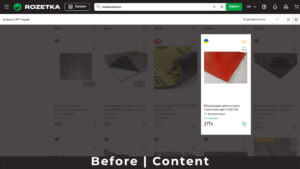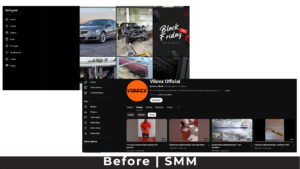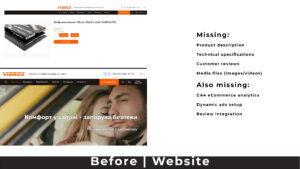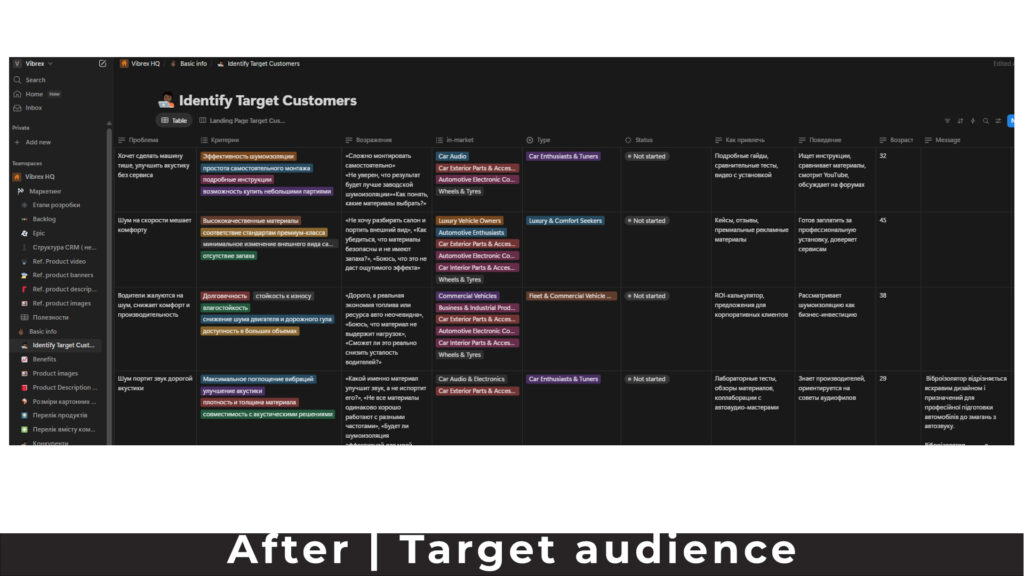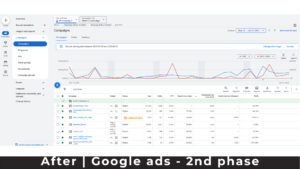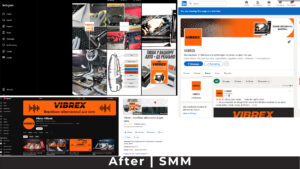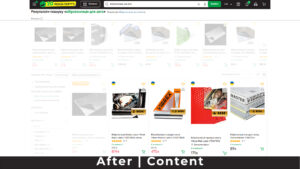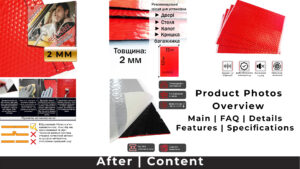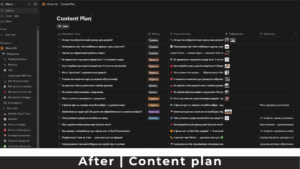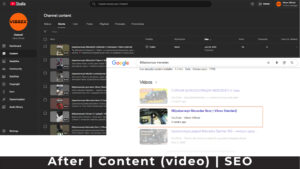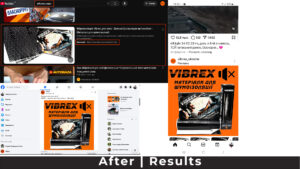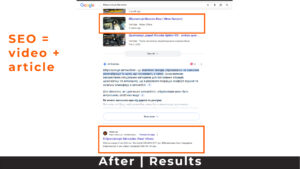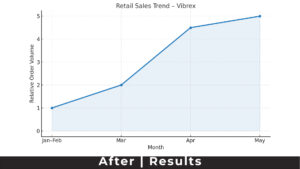1. Company Overview
Brand: Vibrex – a Ukrainian manufacturer of automotive soundproofing materials
Product range: Three series of vibration-damping sheets and multi-purpose soundproofing materials
Starting point:
Modest wholesale presence with a limited client base
Occasional retail sales via the website and marketplaces
Main source of traffic: organic search (SEO for key terms in Ukrainian)
Why marketing was needed:
The owner wanted to boost brand recognition so that when talking to potential partners, the brand would feel familiar and established. Apart from SEO, other channels were underutilized or inactive.
2. Initial Situation
Website: Lacked product-level content; structure unsuitable for eCommerce campaigns
SEO: Developed but depended heavily on the developer’s involvement
Social Media: Inactive for over a year
Analytics: No integrated tracking, poor visibility of customer behavior
Content: Disorganized product visuals, inconsistent messaging, no brand identity
Sales challenges: Low retail activity, outdated wholesale contacts
Key problems:
No content or communication strategy
Difficult to assess brand advertising performance
No reliable analytics setup
Dealers competing directly with the brand on some platforms
3. Target Audience
Segments: End users, car service professionals, workshops, B2B distributors
Purchase motivators:
B2B: pricing, quality, stable supply
B2C: ease of purchase, availability, product credibility
Information sources: Google, word of mouth
Decision factors: Price and recommendations from professionals or communities
4. Goals & KPIs
Marketing goals:
Validate demand through paid traffic (Search and Shopping)
Improve brand visibility in the market
Explore the potential of the direct-to-consumer (D2C) channel
Key performance indicators:
Number of qualified leads and conversions
ROAS / ACOS tracked for internal optimization
Primary channels:
Google Ads (Search, Shopping, Display)
Meta Ads (in later stages)
SEO (as a long-term investment, post website updates)
5. Strategy
Two-phase strategy:
Phase 1: Create visibility and generate first impressions
Phase 2: Build a robust content presence around all relevant search queries
Traffic approach:
Initial campaigns: Search and Shopping Ads for high-intent queries
Expansion: Display and video advertising on YouTube and partner sites
Funnel structure:
Capture: High-bid campaigns targeting relevant categories
Engage: Informative product cards and useful content
Convert: Seasonal promotions and expert consultations
6. Implementation & Tactics
Google Ads: Performance Max + targeted Search campaigns using custom audience signals (e.g., auto parts, car audio)
Meta Ads: Initial test campaigns using static visuals, targeting interest groups
Content production:
Product photography
Clear benefit-driven messaging (AIDA, 4U formats)
Short video demonstrations and infographics
Content strategy: Combined product education, client testimonials, and community-driven posts
Customer involvement: Cashback incentives for user-submitted photos and reviews
Infrastructure upgrades:
Launch of a new website with optimized navigation and taxonomy
SEO-ready category structure (by material type, thickness, installation area, vehicle model)
Full GTM implementation for enhanced analytics and eCommerce tracking
Activation of Telegram channel, Facebook page, YouTube, and Google Business Profile
7. Results
Online performance improvement:
Continuous growth in qualified traffic and customer engagement
Notable increase in order volume over several months
Improved conversion rates after product card redesigns and better visuals
Brand visibility:
YouTube In-feed ads and display campaigns helped reach new audiences
Organic visibility for branded and non-branded queries increased significantly
8. Key Takeaways
Success factors:
Google Ads delivered measurable results when paired with conversion tracking
Professional content and structured product pages improved customer trust
Consistent social media and YouTube activity boosted overall visibility
Lessons learned:
Facebook Ads need strong creative assets to perform well
Brand awareness campaigns require patience — long-term results are more significant than immediate conversions

